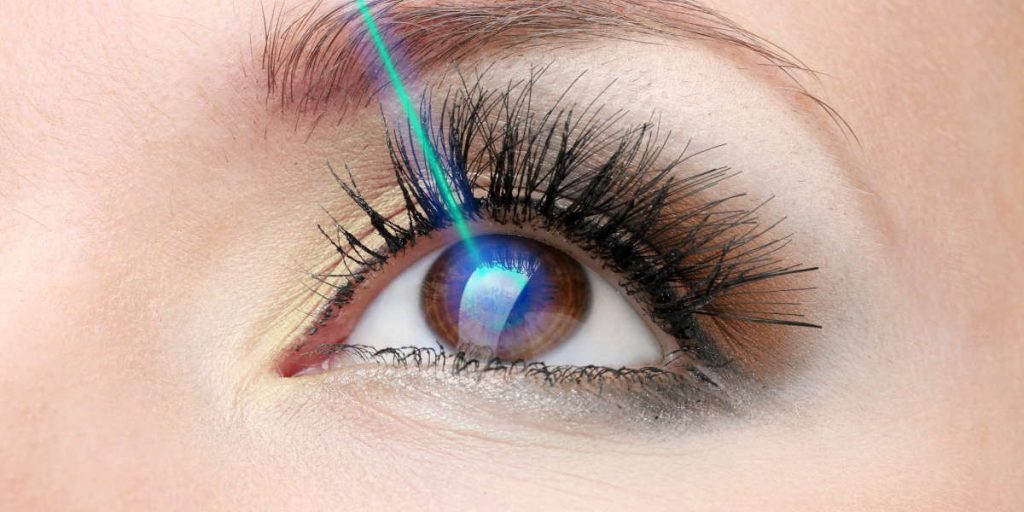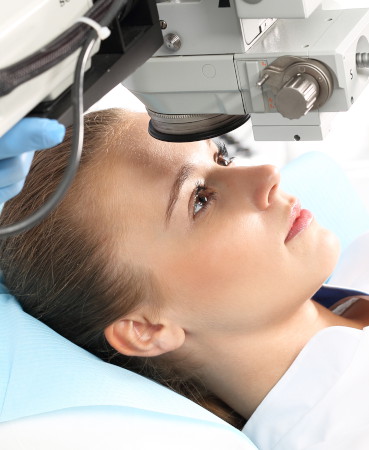What is PRK surgery for the eyes?
Most people have heard of LASIK (laser-assisted in situ keratomileusis) vision correction surgery. It’s probably the most well-known laser vision correction surgery — but it isn’t the only one, and it isn’t always the best one.
Photorefractive keratectomy (PRK) is a laser eye surgery that enhances vision by reshaping the cornea. The cornea is the clear front surface of the eye where light enters.
PRK surgery corrects refractive errors, where the eye cannot properly focus light on the retina, the light-sensitive tissue in the back of the eye. This can create blurry vision. These conditions include nearsightedness (myopia), farsightedness (hyperopia), and astigmatism.

During your PRK surgery — also known as advanced surface ablation (ASA) — the ophthalmologist removes the skin surface of the cornea (epithelium) and reshapes the outer layer of the corneal tissue using a laser. Post-surgery, healing is aided by medicated eye drops and bandage contact lenses that will protect the healing cornea.
Typically, by the one-month follow-up, the patient’s vision has improved by 80%. Ninety percent of people who undergo a PRK procedure end up with 20/40 vision without glasses or contact lenses. The procedure can be performed on one or both eyes.
Patients under 21 or those who are pregnant, nursing, or having pre-existing conditions — including cornea disease, uncontrolled diabetes, cataracts, dry eye syndrome, or advanced glaucoma — are not good candidates for PRK.
What are the potential side effects of PRK?
Dry eye, a condition that occurs when your tears cannot provide adequate lubrication for your eyes, is the most common complication of PRK and can be permanent. In advanced cases of eye dryness, recurrent erosions occur during sleep — the corneal epithelium (the thin tissue that covers the front of the cornea) can adhere to the upper eyelid during rapid eye movement.
PRK can cause glare, halos, and starburst abnormalities during the healing process. With more recent developments in laser technology, this is less common after six months although symptoms can persist beyond a year in some cases.
Patients with myopia run the risk of over/under correction of the refractive error.
PRK lasers that are off-center by as little as 0.5 mm can cause visual symptoms, including glare and halos, ghost images, and blurred vision. This side effect occurs in 1-3% of patients.
What are the pros and cons of PRK laser vision correction?
Any surgery or medical treatment will have positives and negatives. To make sure you’re getting the best treatment option, it’s important to know the advantages and disadvantages ahead of time and have realistic expectations.
At the time of your decision to undergo surgery, your doctor and team should review PRK risks, benefits, and alternatives to PRK surgery.

Advantages of PRK
- A highly accurate method to correct nearsightedness, farsightedness, and astigmatism.
- As many as 90% of people who complete PRK have at least 20/20 vision (and sometimes as acute as 20/40) without wearing glasses or contacts. However, it should be noted that patients may still require glasses for reading and nighttime activities.
- For patients with thin corneas, who are not good candidates for LASIK surgery, PRK is a viable option.
- PRK is the preferred option for athletes involved in high-contact sports. This is because the LASIK procedure requires cutting a corneal flap, which can become dislocated on contact.
- PRK achieves the same long-term results as LASIK.
Disadvantages of PRK
- As with any surgery, PRK comes with inherent risks. These potential complications include scarring, infection, and difficulties with night vision and driving.
- Though highly accurate, some patients may suffer over or under-correction, requiring another PRK procedure.
- In rare cases, vision may become worse after PRK.
- PRK has a longer recovery time than LASIK. LASIK eye surgery is almost immediate, while PRK takes five to seven days.
- Most vision correction surgeries are considered elective and therefore not covered by insurance.
What’s unique about the Assil Gaur Eye Institute for vision correction?
The Assil Gaur Eye Institute (AGEI) offers a group of highly trained eye doctors and surgeons headed by Dr. Kerry Assil, a world-renown specialist recognized for his contributions to the field of laser refractive surgery. Dr. Assil has been involved in dozens of FDA clinical trials for laser devices and has developed new techniques in laser refractive surgery.
Today, AGEI is a celebrated ophthalmology practice recognized for its standard-setting level of care and continuous efforts to advance the fields of laser refractive surgery and artificial lens implantation.
People worldwide seek out Dr. Assil and his team of doctors to perform surgery on their eyes. Patients include other eye surgeons, industry leaders, athletes, medical professionals, and celebrities. But, more important to Dr. Assil, every day, Los Angelinos seek out AGEI to manage their eye health.
Please call (866) 945-2745 or make an appointment online. At Assil Gaur Eye Institute we take our patients’ safety seriously. Our facility’s Covid-19 patient safety procedures exceed all CDC recommendations to minimize the spread of the coronavirus. Masks are required in our institutes at all times.
We are conveniently located for patients throughout Southern California and the Los Angeles area at locations in or near Beverly Hills, Santa Monica, West Los Angeles, West Hollywood, Culver City, Hollywood, Venice, Marina del Rey, Malibu, Manhattan Beach, and Downtown Los Angeles.













